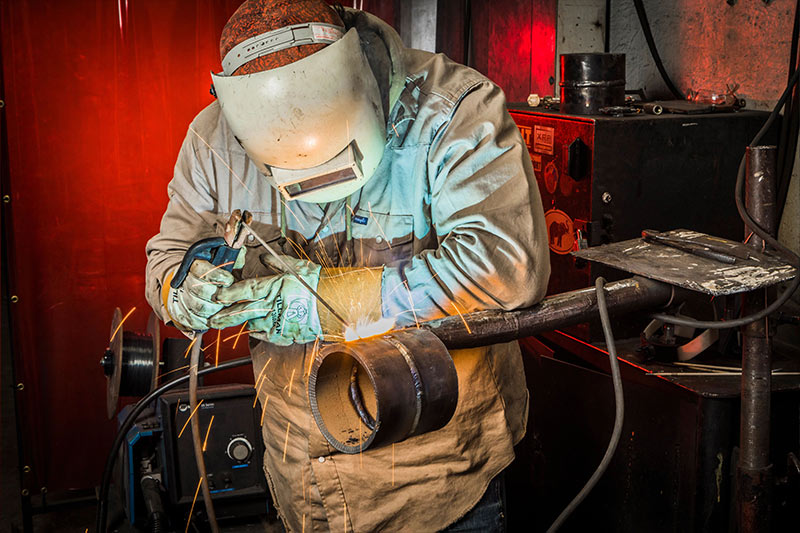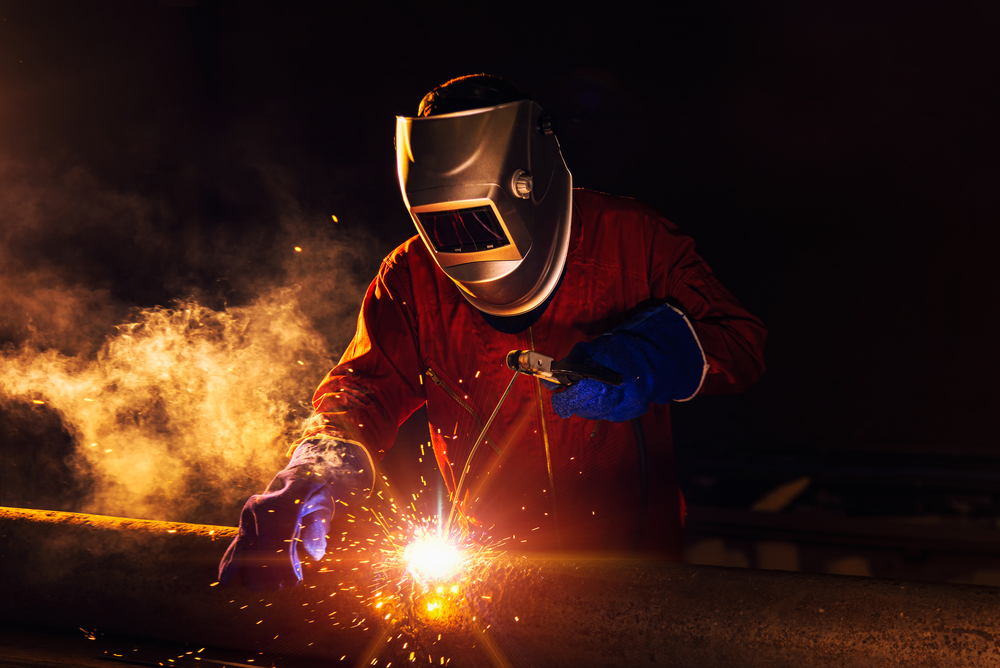How misalignment occurs and what Belgrade Fabrication corrects it
Everything about Welding: Trick Insights Into Techniques and Ideal Practices for Success
Welding encompasses a selection of techniques, each matched for certain products and applications. Comprehending these approaches, such as GMAW, SMAW, and TIG, is essential for accomplishing suitable outcomes. Additionally, the best equipment and safety and security practices can not be overlooked. As prep work and troubleshooting play essential roles in the welding process, grasping these components can significantly boost the high quality of the end product. What are the vital elements that assure a successful weld?
Comprehending Different Welding Methods
Welding techniques incorporate a range of methods, each fit to specific applications and materials. Amongst the most common techniques are Gas Steel Arc Welding (GMAW), Protected Steel Arc Welding (SMAW), and Tungsten Inert Gas Welding (TIG) GMAW, likewise called MIG welding, is popular for its rate and adaptability, making it optimal for thin products. SMAW, or stick welding, is preferred for its simplicity and efficiency in outside settings, particularly with thicker metals. TIG welding provides precision and control, making it ideal for elaborate job and non-ferrous metals (Montana Mobile Welding and Repair Belgrade). Each strategy has its special benefits and factors to consider, permitting welders to pick the most effective method based upon the job's requirements, material kind, and wanted results. Recognizing these strategies is crucial for effective welding
Crucial Welding Tools and Tools
While various welding techniques call for details skills, the appropriate equipment and devices are just as important for achieving high quality outcomes. Important welding equipment includes welding devices, which vary depending upon the technique-- such as MIG, TIG, or stick welding. Safety equipment, including handwear covers, aprons, and helmets, guarantees security and convenience during the procedure. In addition, clamps and components assist secure materials in area, making certain accuracy in welds. Consumables like welding rods, wire, and protecting gas are likewise critical elements that influence the quality of the weld. Devices such as cutters and mills help with surface area preparation and post-weld finishing, contributing to a professional result. Buying top quality tools eventually boosts the efficiency and efficiency of welding jobs.
Security Practices in Welding
Appropriate safety and security practices are necessary in the welding industry to secure workers from prospective hazards. Welders have to put on appropriate individual protective devices (PPE), including headgears with correct shading, gloves, and flame-resistant apparel. Sufficient air flow is essential to reduce exposure to hazardous fumes and gases produced throughout the welding procedure. In addition, employees ought to be educated in the right handling of welding tools to avoid crashes. Fire precaution, such as maintaining flammable materials far from the welding location and having fire extinguishers conveniently available, are necessary. Routine evaluations of devices and workspaces can aid determine prospective risks prior to they cause mishaps. By sticking to these safety methods, welders can create a much safer working environment and reduce dangers related to their trade.
Preparing Materials for Welding
Preparing products for welding is an essential action that substantially affects the high quality and stability of the end product (Montana Mobile Welding and Repair Welding). Appropriate preparation entails cleansing the surface areas to get rid of impurities such as dirt, corrosion, and oil, which can endanger the weld. Techniques such as grinding, fining sand, or making use of solvents are frequently employed to accomplish a clean surface. In addition, ensuring that the products mesh snugly is important; voids can result in weak welds. It's additionally crucial to consider the positioning and positioning of the parts, as this will influence the ease of welding and the final end result. Selecting the appropriate filler material and making sure compatibility with the base steels is vital for accomplishing strong, durable welds.
Tips for Achieving High-Quality Welds
Achieving high-grade welds requires attention to information and adherence to finest practices throughout the welding process. Proper joint preparation is vital, ensuring surface areas are cost-free and tidy from pollutants. Selecting the ideal filler material and welding method based on the base steels is vital for perfect bonding. Maintaining consistent travel rate and angle while welding can advertise and prevent defects harmony. In addition, controlling heat input is essential; too much warm can bring about bending and compromised joints. If needed, frequently inspecting the welds throughout the process allows for instant modifications. Employing appropriate post-weld treatments, such as cleansing and stress and anxiety relief, can enhance the durability and honesty of the weld, eventually making certain an effective outcome.
Troubleshooting Common Welding Issues
Welding often provides challenges that can influence the quality and honesty of the final product. Common problems such as porosity, irregular weld grains, and overheating can occur, each calling for certain troubleshooting techniques. Comprehending these issues is important for welders to boost their abilities and achieve suitable outcomes.
Porosity Troubles Explained
Porosity can usually be neglected, it stays an essential concern in welding that can compromise the integrity of an ended up product. Porosity describes the visibility of little gas pockets within the weld bead, which can lead and deteriorate the joint to premature failure. This trouble commonly emerges from impurities, wetness, or improper securing gas insurance coverage during the welding process. To reduce porosity, welders should confirm that the base materials are completely dry and tidy, use proper securing gases, and preserve consistent welding specifications. Routinely evaluating the tools and setting can additionally assist identify potential concerns prior to they manifest in the weld. Dealing with porosity efficiently is vital for achieving strong, durable welds that satisfy quality criteria.

Irregular Weld Beads
Inconsistent weld beads can substantially influence the quality and stamina of a completed item. Various factors add to this issue, consisting of inappropriate traveling speed, wrong amperage setups, and inconsistent electrode angles. When the welder relocates too rapidly, a bead may appear narrow and do not have penetration, while moving also slowly can create excessive buildup. Additionally, making use of the wrong amperage can result in either damaging or excessive spatter, both of which compromise weld honesty. The welder's method, such as irregular torch movement, can additionally cause uneven grain look. To reduce these troubles, welders must concentrate on preserving stable, controlled activities and ensuring correct tools setups to attain harmony in their welds. Consistency is key to achieving solid and dependable welds.
Overheating and Warping Issues
Too much heat during the welding procedure can result in substantial getting too hot and deforming concerns, impacting the architectural integrity of the workpiece. These troubles usually show up as distortion, which can endanger placement and fit-up, making further setting up testing. Factors adding to overheating consist of the option of welding parameters, such as voltage and take a trip rate, along with the kind of product being welded. To minimize these problems, welders need to keep regular traveling speed and appropriate warmth input while monitoring the work surface temperature. In addition, pre-heating or post-weld heat treatment can help alleviate stresses brought on by fast air conditioning - Montana Mobile Welding and Repair Belgrade Welding. Routine examination and adherence to ideal techniques are important in stopping overheating and making certain the durability and integrity of bonded structures
Regularly Asked Inquiries
What Are the Job Opportunities in the Welding Industry?
The welding market offers varied career opportunities, consisting of settings as welders, engineers, assessors, and instructors. Professionals can work in production, construction, aerospace, and vehicle sectors, taking advantage of strong need and competitive wages in different duties.
How Can I Improve My Welding Speed Without Compromising Quality?
To boost welding speed without compromising quality, one should exercise effective techniques, preserve equipment, maximize setups, and enhance hand-eye sychronisation. Regular training and looking for comments can also considerably contribute to attaining faster, top quality welds.
What Accreditations Are Offered for Welders?
Various accreditations click here exist for welders, consisting of those from the American Welding Society (AWS), the National Center for Building Education and Research (NCCER), and various industry-specific organizations. These credentials enhance employability and demonstrate skill effectiveness.
Exactly How Does Welding Influence the Features of Metals?
Welding influences the properties of metals by altering their microstructure, which can lead to changes in ductility, stamina, and firmness. Warm input and air conditioning prices throughout the process substantially influence these product qualities.
Can I Bonded Dissimilar Metals Together?
